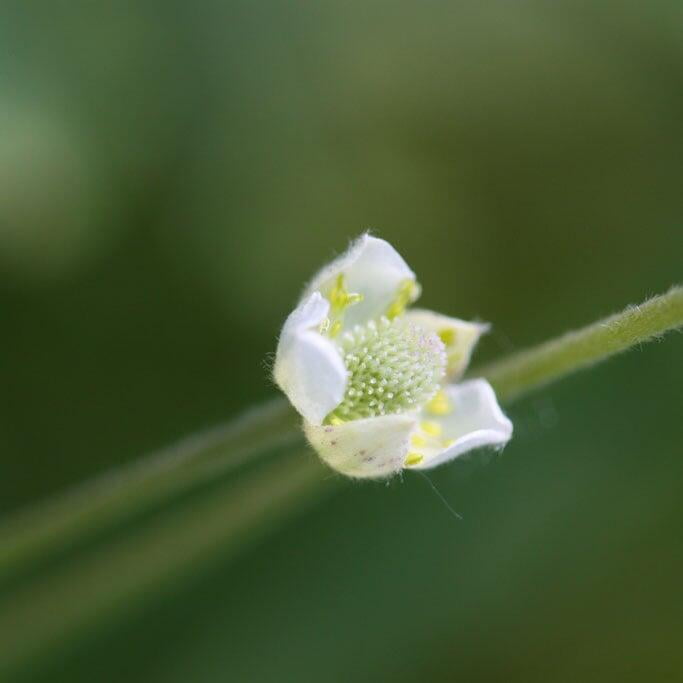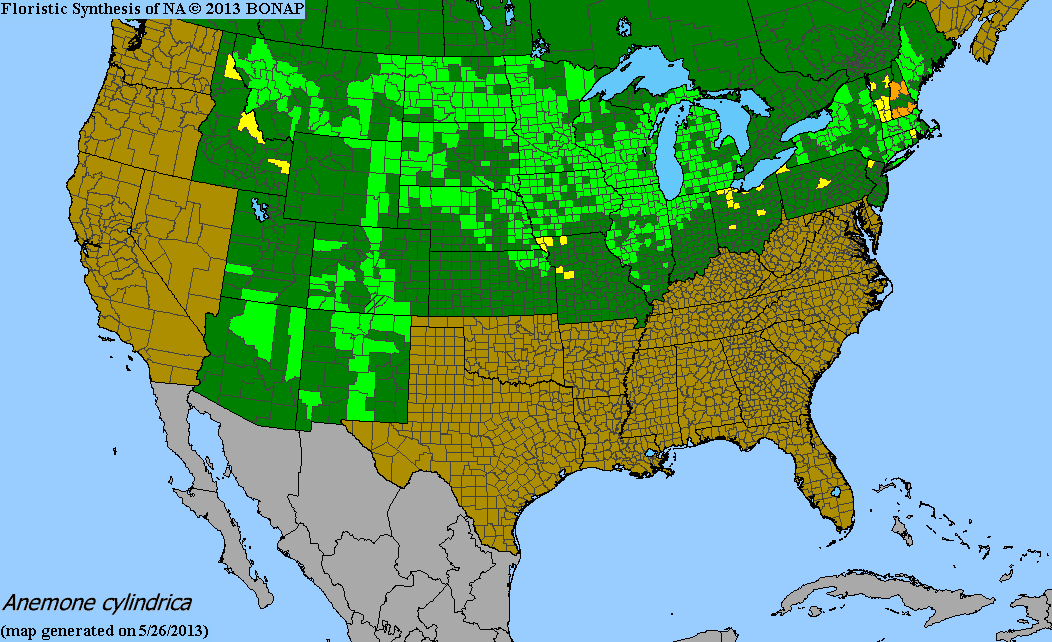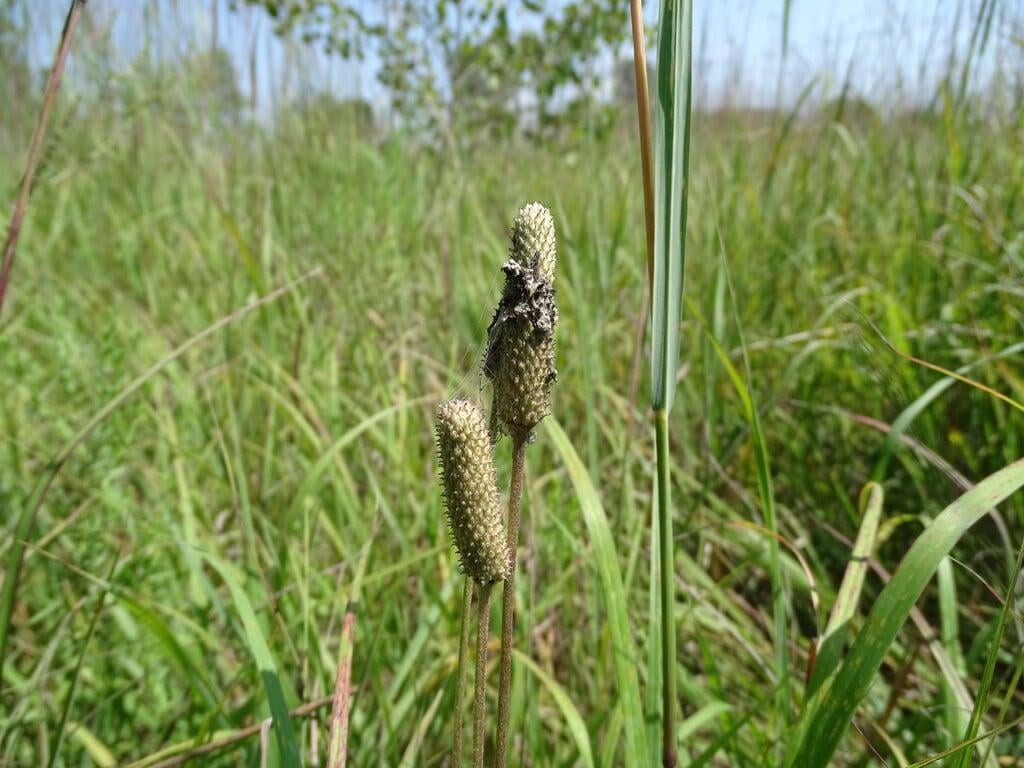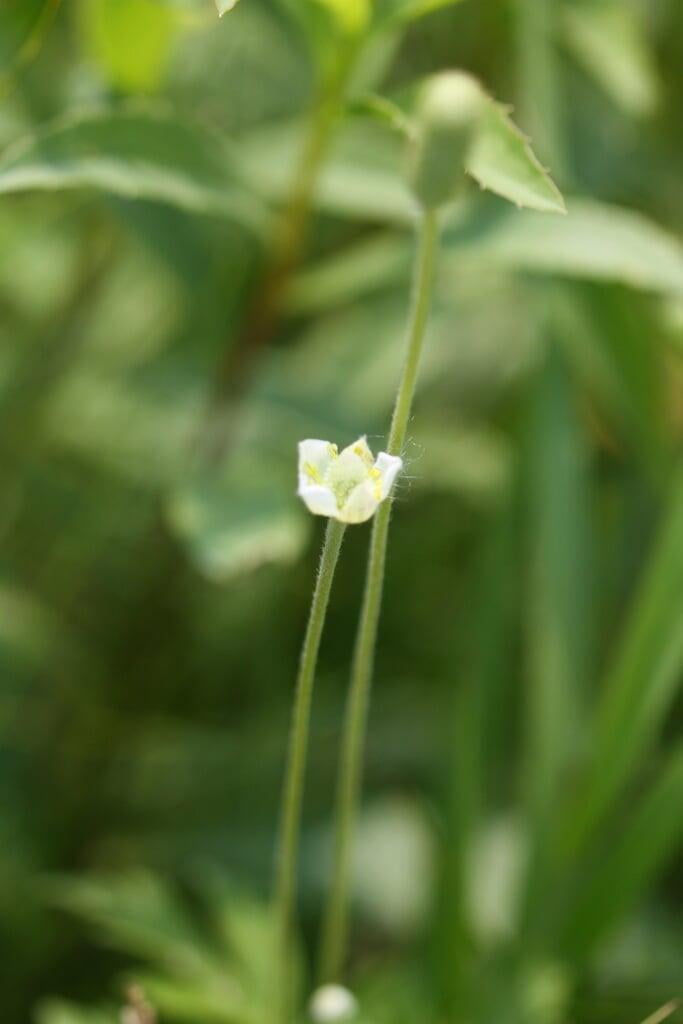Anemone cylindrica
Thimbleweed Description:
Anemone cylindrica, commonly known as the candle anemone, is a herbaceous perennial plant that belongs to the buttercup family (Ranunculaceae). It is native to North America, and can be found growing in moist meadows, prairies, and open woods.
The plant typically grows to a height of 1-2 feet (30-60 cm), and has an erect, unbranched stem that is covered in fine hairs. The leaves are basal and alternate, with a long petiole and three-parted lobed blade that is ovate to elliptic in shape, and typically measures 2-5 inches (5-13 cm) in length.
The flowers of Anemone cylindrica are solitary and terminal, and bloom from mid-summer to early fall. The flowers are white, measuring around 1 inch (2.5 cm) in diameter, and are composed of 5-8 petal-like sepals that are elongated and narrowly elliptic. The center of the flower is filled with numerous yellow stamens and greenish pistils.
After flowering, the plant produces a cylindrical, beaked seed capsule that is covered in hooked bristles. When mature, the capsule splits open to release numerous small, black, shiny seeds that are dispersed by wind.
Overall, Anemone cylindrica is an attractive and interesting plant that is well-suited to naturalistic gardens or wildflower meadows, particularly in areas with well-drained soil and full to partial sun.
Native Range:
Thimbleweed can be found growing natively in most of Minnesota. This plant can also be found in many other states. It's native range is from Idaho to Arizona and East to Maine. That said, it's most likely to be found in the northern states of the continental United States.
Standard Plant Information:
Plant Height: 1' - 2'
Bloom Time: June - August
Preferred Habitat: Does well in part shade to full sun in prairies, woodland edges, and roadsides.
Sowing:
For most homeowners, the best option is to scatter seed on the ground by hand broadcasting at a minimum of 16-64 pls ounces per acre. For even coverage, we recommend that you broadcast seed in perpendicular rows across the site to ensure even coverage.
You’ll want to broadcast any grass seed first, which will get raked into the soil lightly. Next, it is ideal to mulch the area lightly with either a clean (no seed) straw or preferably with our native Little Bluestem straw, sold at our retail garden centers. After a light mulching is complete, now it’s time to broadcast your native wildflower seeds, which should not be raked into the soil. A good rain or watering is sufficient to cover the seed.
Planting:
Simply dig a hole in the soil slightly larger than the plant’s roots. Ensure that the soil line of the plant is maintained during the transfer (i.e. the plant should be at the same level with the ground as it was in the pot). Pack any loose dirt back around the plant and make sure you water it well the same day to ensure it has the best chance of survival.








